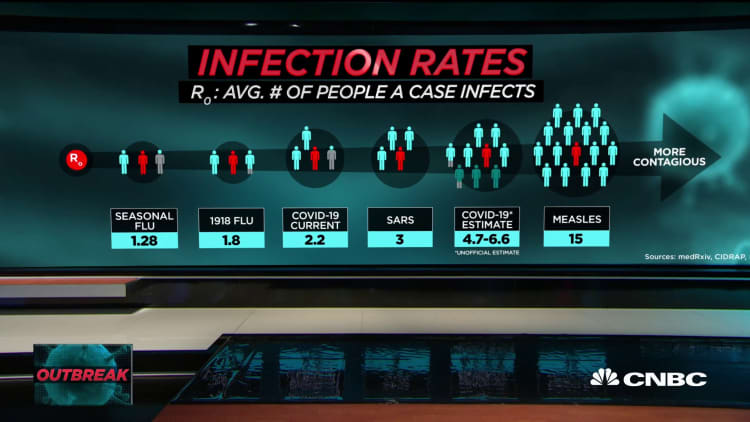World health officials are working with Chinese authorities to determine when the 1,716 health workers in the country were infected with the COVID-19 coronavirus, World Health Organization officials said Friday.
It appears infections among medical workers peaked in mid-January and have "rapidly" decreased since, Dr. Mike Ryan, executive director of the World Health Organization's emergencies program, said at a news conference at the agency's headquarters in Geneva. "This may reflect increased levels of training, increased levels of protection and increased levels of awareness."
Officials are also looking to see whether the medical workers were exposed to the virus unknowingly within a clinical environment and whether they were wearing protective equipment at the time, Ryan said. "There are a whole lot of factors we need to look at, and we will be doing that with Chinese authorities."

Earlier in the day, China's National Health Commission said that 1,716 health workers in the country had been infected with the coronavirus and six of them have died. It was the first time China published figures specifically relating to infected medical personnel.
Dr. Sylvie Briand, head of WHO's Global Infectious Hazard Preparedness division, told reporters that the health workers may have been fatigued at the time they were infected and weren't taking proper protective measures because they were too tired. China has sent medical professionals from several regions to support those workers, she said.
Later Friday, Dr. Nancy Messonnier, director of the CDC's National Center for Immunization and Respiratory Diseases, told reporters on a conference call that the notice from China of the health workers being infected was "concerning." She said there are currently no health workers in the U.S. that have contracted the virus.
WHO is asking suppliers of protective gear to prioritize sending the equipment to regions most affected by the virus.
Last week, WHO said it sent medical supplies such as masks, gloves, gowns and diagnostic tests around the world. It is discouraging stockpiling of protective gear, saying the limited number of items need to be saved for regions most affected by the virus. The price of protective gear has increased, while availability has decreased, WHO officials said.
That could have a "knock-on effect" for other ongoing epidemics such as Ebola, Ryan said last week.
On Thursday, world health officials said they were scrambling to determine just how widespread the new coronavirus is as Chinese authorities reported a surge in new cases after changing how they count confirmed infections.
"How big is the iceberg?" Ryan said. "We do know, and we all accept, that there is transmission occurring at some level in communities. We've all seen those clusters, we've all seen those super spreading events."
The flu-like virus has killed at least 1,380 people and sickened more than 64,000 worldwide as of Friday morning.
World health officials have said the respiratory disease is capable of spreading through human-to-human contact, droplets carried through sneezing and coughing and germs left on inanimate objects. The coronavirus produces mild cold symptoms in about 80% of patients, they said. About 15% of the people who contract the virus have ended up with pneumonia, with 3% to 5% of all patients needing intensive care.
Ryan said Thursday that officials are working on identifying the virus's natural host. Earlier in the week, WHO officials said the virus, which emerged from a seafood market in Wuhan, likely originated in bats and then jumped to an "intermediate host" before infecting humans.



